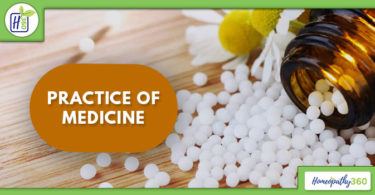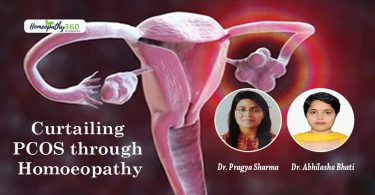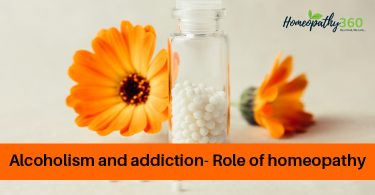
ABSTRACT:
Acne vulgaris is a common skin disease affecting mostly adolescents. It is associated with depression, low self esteem, anxiety and social phobia and in extreme cases suicidal ideation in patients suffering from severe acne vulgaris. Invisible psychological scars (both subjective and objective) can be left by acne vulgaris in adolescents.
It is essential to detect and treat these psychological issues because of the frequency of depressive symptoms and suicidal ideations. Homoeopathy provides early and effective treatment that improves both physical and psychological effects of the disease.
Keywords: acne vulgaris, adolescent, self –esteem, depression, quality of life, suicidal ideation, homoeopathy
Abbreviations: RSES -Rosenberg self-esteem scale,
DLQI-dermatology life quality index, AV–acne vulgaris
INTRODUCTION:
Appearance is important in our society and influences the way in which we are perceived by others. The skin is the most visible organ of the body and determines, to a large extent, our appearance, with a wide function in social and sexual communication.Skin diseases have had a negative impact on human beings, both in acceptance of their own image and in quality of life.
Acne vulgaris is a dermatological genetic-hormonal illness, self-limited, in pilosebaceous locations, with formation of comedones, papules and cysts in which evolution to a greater inflammatory process is added, leading to formation of pustules and abscesses, with frequent cicatricial success, causing great psychological impact in patients affected by this disease.
Acne vulgaris lesions predominate in exposed areas such as face and thorax, which leads to feelings of guilt, shame and social isolation. Facial appearance has an important role in self-perception, as well as in the interaction with others; face lesions cause a significant impact in women’s quality of life. In the long run acne may cause cutaneous as well as psychological scars.(1)
AETIOLOGY:
Although the exact cause of acne is unknown, following factors are associated with acne vulgaris-
- Increased sebum production (due to increased end organ sensitivity to androgen)
- Follicular epidermal hyperproliferation
- Increased microbial colonisation (especially Propionibacterium acnes)
- Release of inflammatory mediators (especially cytokines)(2)
- Use of medications like lithium, steroids, and anticonvulsants
- Exposure to excess sunlight
- Use of occlusive wear like shoulder pads, headbands, backpacks, and underwire brassieres
- Endocrine disorders like polycystic ovarian syndrome and even pregnancy
Genetic factors affect the percentage of branched fatty acids in sebum. Heritability estimates range from 50- 90%.(3)
EPIDEMIOLOGY
Age of onset of acne is 12-14 years, being earlier in females. In about 70% of subjects, the lesions subside in 3rd decade of life. Acne affects both sexes equally, but nodulo-cystic acne is almost 10 times more frequent in males.(2)
Acne occurs in about 85-100% of adolescents, and 1-5% of adults at age 40 continue to bear acne lesions indicating that much of the population will face the potential negative impact of acne at some time in their life. It is estimated that more than 30% of outpatient acne sufferers have a major psychiatric disorder, typically depression or anxiety.(4)
Prevalence varies based on age and ethnicity, but up to 85% of adolescents and up to two-thirds of patients over the age 18 of years may be afflicted with acne.(5)
There was high prevalence of AV (89%), with predominance of the male sex, which also had higher onset of moderate to severe forms in comparison with the female sex.(1)
Urban populations are more affected than rural populations. About 20% of the affected individuals develop severe acne, which results in scarring. Asians and Africans tend to develop severe acne, but mild acne is more common in the white population.(3)
The appearance of acne tends to have a greater role in embarrassment and discomfort in women compared with men.(5)
High prevalence of inadequate behaviour, such as frequent manipulation of lesions (present in 58%), use of inadequate products and self-medication (mentioned by 87.2% of the young people who had AV oriented treatment) (1) have been seen in patients suffering from acne vulgaris.
PATHOPHYSIOLOGY
During puberty, under the influence of androgens, sebum secretion is increased as 5-alpha reductase converts testosterone to more potent DHT, which binds to specific receptors in the sebaceous glands increasing sebum production. This leads to an increased hyperproliferation of follicular epidermis, so there is retention of sebum. Distended follicles rupture and release pro-inflammatory chemicals into the dermis, stimulating inflammation. C. acnes, Staphylococcus epidermis, and Malassezia furfur induce inflammation and induce follicular epidermal proliferation.
Factors aggravating acne include:
- Food with a high glycemic number like dairy products (which also contain hormones), junk food, and chocolates which cause insulin-like growth factors that stimulate follicular epidermal hyperproliferation.
- Oil-based cosmetics and facial massage.
- A premenstrual flare-up in acne seems to follow edema of the pilosebaceous duct. This occurs in 70% of female patients.
- Severe anxiety and anger may aggravate acne, probably by stimulating stress hormones.(3)
PSYCHOLOGICAL IMPACT OF ACNE VULGARIS ON ADOLESCENTS
The majority of patients who suffer from acne vulgaris are adolescents. The adolescent stage corresponds to a life stage during which the development of core ideology related to body image, sexuality, self-image, socialisation, and vocational choices begins. The changes in hormone levels that are partially responsible for AV also lead to psychological vulnerability in this age group. Patients who develop acne earlier begin to experience lower self-esteem and impairment with relationships at an early age. (5)
Its onset in adolescence may add to the emotional and psychological challenges experienced during this periodand it can lead to the developmental issues of body image, socialization, and sexuality.Psychological issues such as dissatisfaction with appearance, embarrassment, self-consciousness, lack of self-confidence, and social dysfunction such as reduced/avoidance of social interactions with peers and opposite gender, reduced employment opportunities have been documented.Acne cannegatively influence the intention to participate in sports.(6)
Negative emotions such as anger can disturb the regulation of immune and endocrine function and can slow wound healing. (7)
Bullying/ taunting
Bullying encompasses verbal aggression, physical aggression, and social exclusion. Being teased (a form of bullying) has been associated with depression, impairment of self-esteem, anxiety, and social phobia . Although the social environment that a patient encounters on a daily basis cannot be directly controlled, dermatologists can assess for the impact of bullying on patients’ self-esteem. Discussing camouflage techniques may help patients feel more comfortable in public during treatment. Patients may also need to be encouraged to adhere to treatment to see results.(5)
Effect on self esteem
In addition to the psychological and occupational impairments, AV can have a major impact on self-esteem and self-image. Self-esteem is defined as “the reasonable or justifiable sense of one’s worth or importance”. The development of self-esteem and personal identity is critical in young adults. A visible and potentially disfiguring skin disease can lead to interpersonal rejection and issues with social, vocational, and sexual competence, which inturn can have anegative impact on psychosocial and sexual maturity. Low self-esteem may be associated with anxiety and depression.(5)
Severity of acne
More severe the acne vulgaris, greater the impact on quality of life and self-esteem, because both objective and subjective severity can influence a patient’s self-image.(5)
The most prevalent psychosocial issue was “fear that acne will never cease”, present in 58% of cases. Issues: “fear that acne will never cease”, “aversion to looking at himself in the mirror”, “social inadequacy (embarrassed) by physical appearance” and “afraid of meeting people for the first time and meeting acquaintances” had greater prevalence.(1)
Behavioral signs such as poor eye contact, angry or negative verbalisation, poor self-care and personal hygiene, compulsive behaviors, or self-mutilating behaviors may also be considered a high risk. Involving patients in these discussions will lead to a better physician–patient relationship, improved medical care, and better psychological functioning for the patient.(5)
TREATMENT
One of the first steps in improving acne vulgaris is seeing patients in a medical setting. Between 70% and 80% of patients used self-prescribed topical treatments, but only between 5% and 28.3% of participants had visited a dermatologist.(5)
Homoeopathic treatment is not only confined to the physical symptoms but is equally effective against the mental symptoms associated with the diseased condition.
There are some rubrics, indicating physical as well as mental symptoms of acne vulgaris-
- Mind-delusion- body-ugly; body looks (Nux v.Thuj)
- Mind-delusion -disease –incurable disease; he has an (Arg-nit.Lach.Syph)
- Mind-delusion –doubtful-recovery, of ( Ars.Alum.Ign.Lyc.Merc.Stann.)
- Mind –confidence-want of –school; in (Calc-p.Carc.Phos.Puls.Sil.)
- Mind-sadness-acne, with(aur-br)
- Face –eruptions –pustules (Ant- c.Bell. Rhus-t.Tub.Kali-br.Nat-m.Nat-p.Nit-ac.Hep.Calc.Con.Caust.Merc.Mez.)
- Face-eruptions-acne –cystic ( nit-ac)
- Face-eruptions-acne-puberty; at (hep.podo.)
- Face –eruptions-acne-scars with (Sil.thuja.kalibr.merc.bell.)
- Face –eruptions-acne-scars with –Red (bell)
- Face –eruptions-acne-scars with –Unsightly (kali-br.carb-an)
- Face –eruptions-comedones
(Ant-c.Graph.Kalibr.Lyc.Petr.Psor.Sel.Sulph.ars.bell.hep.lach.sep.sil.tub.)
- Dreams-face- pustules; covered with white, ugly (anac.)(10)
Medicines like Natrum muriaticum, Pulsatilla nigricans, Antimonium crudum, Nux vomica, Kalium bromatum, Mercurius solubilis, Calcarea carbonicum, Tuberculinum, Lycopodium clavatum, Lachesis mutus, Rhus Toxicodendron, Phosphorus, Silicea terra, Nitricum acidum, Sulphur, etc. are frequently prescribed on the basis of symptom similarity of the patients suffering from acne vulgaris.
ASSESSMENT METHODS
Several assessment methods were used to evaluate self-esteem and acne vulgaris, we will briefly discuss about two frequently used questionnaires: the Rosenberg self-esteem scale (RSES) and the Dermatology life quality index (DLQI).
The RSES was developed in 1965 by Dr. Morris Rosenberg for use by adolescents. It consists of 10 questions and four answer choices. Each choice is given a point score. Higher scores correlate with higher self-esteem and lower scores correlate with lower self-esteem. Scores between 15 and 25 are considered average.(8)
The DLQI was created in 1994 by Drs. Andrew Finlay and Gul Khan and requires patients to answer 10 questions with up to five possible answer choices. Each choice has a different score. The higher the score, the greater the impairment. The questions assess symptoms and feelings, daily activities, leisure, work and school, personal relationships, and treatment.(9)
CONCLUSION:
Acne can have major psychological effects on an individual especially in adolescents and can result in reduced self esteem, depression, anxiety and in extreme cases suicidal ideation.
It is necessary to detect psychological sufferings and to provide effective psychological assessment, support with appropriate treatment.
REFERENCES:
| 1. Vilar GN, Santos LA dos, Sobral Filho JF. Quality of life, self-esteem and psychosocial factors in adolescents with acne vulgaris. An Bras Dermatol [Internet]. 2015;90(5):622–9.Available from: http://dx.doi.org/10.1590/abd1806- 4841.2015337262. 2. Khanna N. Illustrated synopsis of dermatology & sexually transmitted diseases. 5th ed. New Delhi, India:Elsevier;2016. 3. Sutaria AH, Masood S, Schlessinger J. Acne Vulgaris. 2022 May 8. In: StatPearls [Internet]. Treasure Island (FL): StatPearls Publishing; 2022 Jan–. PMID: 29083670. 4. Krejci-Manwaring J, Kerchner K, Feldman SR, Rapp DA, Rapp SR. Social sensitivity and acne: the role of personality in negative social consequences and quality of life. Int J Psychiatry Med [Internet]. 2006;36(1):121–30. Available from: http://dx.doi.org/10.2190/FQXN-K610-BNY8-UQ0L 5. Gallitano SM, Berson DS. How acne bumps cause the blues: The influence of acne vulgaris on self-esteem. Int J Womens Dermatol [Internet]. 2018;4(1):12–7. Available from: http://dx.doi.org/10.1016/j.ijwd.2017.10.004 6. Hazarika N, Archana M. The Psychosocial Impact of Acne Vulgaris. Indian J Dermatol. 2016;61(5):515-520. doi:10.4103/0019-5154.190102 7.Rapp DA, Brenes GA, Feldman SR, Fleischer AB Jr, Graham GF, Dailey M, et al. Anger and acne: implications for quality of life, patient satisfaction and clinical care. Br J Dermatol [Internet]. 2004;151(1):183–9. Available from: http://dx.doi.org/10.1111/j.1365-2133.2004.06078.x 8. Rosenberg M. Princeton University Press; Princeton, NJ: 1965. Society and the adolescent self-image. [Google Scholar] 9. Finlay A.Y., Khan G.K. Dermatology Life Quality Index (DLQI)–a simple practical measure for routine clinical use. Clin Exp Dermatol. 1994;19:210–216. [PubMed] [Google Scholar]10. Schroyens F. Augmented Clinical Synthesis Repertorium Homoeopathicum Syntheticum. 9.1ed. Noida,India: B.Jain Publishers (P) LTD;2016 |
About the authors: Monika Yadav, PG Scholar, State National Homoeopathic Medical College & Hospital, Lucknow, U.P.Tahura Ahmad, PG Scholar, State National Homoeopathic Medical College & Hospital, Lucknow, U.P.




